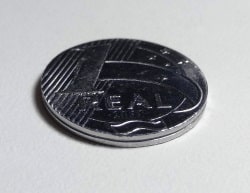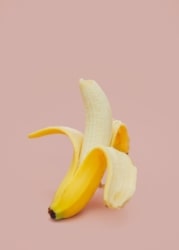What is it?
This code aims to create a progressively enhanced, lightweight, Wikipedia-like lightbox plugin in vanilla JS. LiteLightbox is about 2.7 KB of raw minified JavaScript, at litelightbox.min.js (uncompressed!).
Additionally, for the default styling a la Wikipedia, there's around 5 KB of raw minified CSS, at litelightbox.min.css.
<link href="litelightbox.min.css" rel="stylesheet" type="text/css">
<script src="litelightbox.min.js"></script>What's a lightbox? It's that thing where you see a thumbnail of an image and, when you click it, it expands into the full-resolution image.
Why should I use it? Well, ideally, you don't want to load huge, hundred-KB images into a user's browser unless they want to see them. So, instead, you can load small previews and wait for users to click on them to expand.
# Simplest example
This is a simple, common use case. No captions, just a simple image. The thumbnail is wrapped in an anchor, which acts as the fallback for users with JavaScript disabled.
<a href="big-version.png" data-llb-src="big-version.png">
<img src="small-version.png">
</a>
Alternatively, if your trigger is an anchor which links to the
full-resolution image via href already, you don't need to
write the path again into data-llb-src; instead, you can
pass a value of "href" to it:
<a href="big-version.png" data-llb-src="href">
<img src="small-version.png">
</a>
Don't forget your alt text! If the first child of the data-llb-src
element is an <img> with alt
text, then that alt text will be copied to the full-resolution image.
<a href="big-version.png" data-llb-src="href">
<img src="small-version.png" alt="…">
</a>
To add an alt text specific to the full-resolution image, simply add the
attribute data-llb-alt:
<a href="big-version.png" data-llb-src="href" data-llb-alt="…">
<img src="small-version.png" alt="…">
</a>
# Lightbox captions
You can, of course, include captions in the lightbox. This is done via
the data-llb-caption attribute.
Note that lightbox captions do not show up in "thumbnail mode". They
only appear when the lightbox is opened.
Here's an example (click to see image attribution):
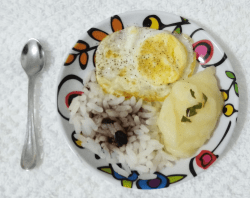 Photo taken on 8 June 2020 by
User:Avelludo.
Available at
Wikimedia Commons.
Photo taken on 8 June 2020 by
User:Avelludo.
Available at
Wikimedia Commons.
<a href="big-version.png" data-llb-src="href">
<img src="small-version.png" alt="…">
</a>
<span data-llb-caption>
(full-resolution caption)
</span>
The element with the data-llb-caption
attribute will be hidden on the main page, and its contents will be
placed inside a <figcaption>
element in the lightbox.
Note that, to include a lightbox caption, the caption wrapper element
(that is, the element with the data-llb-caption attribute)
MUST be the next direct sibling of the element with
the data-llb-src attribute. In this example, the
<span data-llb-caption>
element MUST come immediately after the
<a data-llb-src> element.
Be aware of permitted contents in HTML. For example, a
<div> element is not allowed inside a
<p> element. So, when building your caption with custom
HTML, make sure you're not breaking the DOM, so that your captions show
up properly.
With lightbox captions, images can have two different contexts – a shortened caption that goes alongside the thumbnail, and a longer caption that appears with the lightbox.
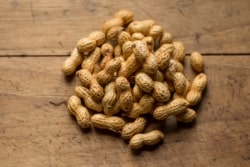
This caption is only visible on the lightbox.
Photo published on 3 December 2019 at Unsplash by Isai Dzib.
- Camera
- Canon, EOS REBEL T3i
- Lens
- 50.0mm f/2.2
- 1/100s
- ISO 200
- Dimensions
- 4902 × 3268
This caption is only visible on the thumbnail. Photo by Isai Dzib on Unsplash.
<figure>
<a href="big-version.png" data-llb-src="href">
<img src="small-version.png" alt="…">
</a>
<div data-llb-caption>
<p>(full-resolution caption 1)</p>
<p>(full-resolution caption 2)</p>
</div>
<figcaption>
(thumbnail caption)
</figcaption>
</figure>
Note, again, that the element with the
data-llb-caption
attribute is the next direct sibling of the element with the
data-llb-src attribute.
Alternatively, if you use
data-llb-caption="visible",
your caption can be the same for both the thumbnail and the lightbox.
<figure>
<a href="big-version.png" data-llb-src="href">
<img src="small-version.png" alt="…">
</a>
<figcaption data-llb-caption="visible">
(caption for thumbnail and lightbox)
</figcaption>
</figure>
# Galleries
You can create galleries by adding the data-llb-gallery
attribute on the element that has data-llb-src.
Once open, the lightbox will display arrows for navigation. The user may
also press the arrow keys on the keyboard to flip through the gallery.
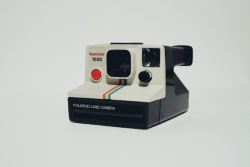
Photo by Patrick Ferretti on Unsplash.
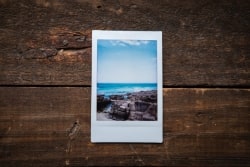
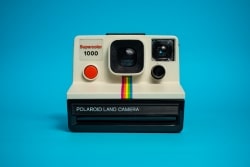
Photo published on 5 February 2021 at Unsplash by Patrick Ferretti.
- Camera
- Sony, ILCE-7M3
- Lens
- 50.0mm f/10
- 1/160s
- ISO 100
- Dimensions
- 6000 × 4000
Photo by Patrick Ferretti on Unsplash.
<a href="big-1.png" data-llb-src="href" data-llb-gallery>
<img src="small-1.png" alt="…">
</a>
<a href="big-2.png" data-llb-src="href" data-llb-gallery>
<img src="small-2.png" alt="…">
</a>
Currently, each page can only have a single gallery; that is, every
image tagged with data-llb-gallery
will be part of the same gallery. A further customization
option will be added in the future, allowing you to specify an identifier
for each separate gallery you wish to create.
# No previews
data-llb-src attribute. This
means that you don't need a thumbnail image to make it work. A simple
anchor (<a>) will suffice:
open big image.
<a href="big-version.png" data-llb-src="href" data-llb-alt="…">
open big image
</a>
Note that, since this example does not have an <img>
element with alt text as its first child, the data-llb-alt
attribute is used.
You could, in theory, use a button instead of an anchor, like this:
Photo published on 12 June 2018 at
Unsplash
by Charles Deluvio.
Or any other element, like a <span>:
example span
Photo published on 12 June 2018 at
Unsplash
by Charles Deluvio.
Keep in mind that, in the event that the user does not have JavaScript
turned on, anchors will maintain the native behavior of redirecting the
user to the full-resolution image. Other elements, such as
<button>s, may not have these benefits. Additionally,
remember to make your trigger element accessible to keyboard users.
